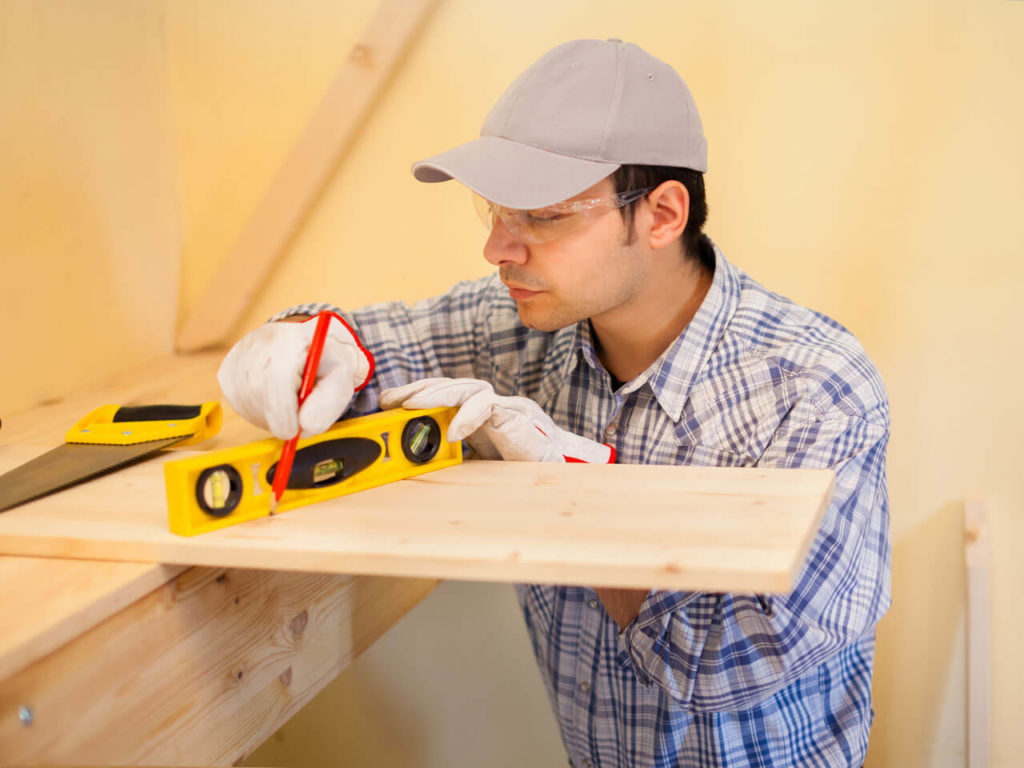Working With Plywood

Storage
The best method of storing plywood is to lay the sheets flat. If this is not possible, they should be stored on edge and supported. Never lay plywood at an angle as it will warp. This is especially true of thinner panels.
Cutting
When hand sawing, always place the good face of the plywood up and use a saw that has at least 10 points to the inch. Make sure that the panel is supported firmly so it will not sag. Hold the saw at a low angle when cutting and, if possible, place a piece of scrap stock underneath. When using the circular saw, install a sharp combination blade or one with fine teeth. Adjust the blade so that the teeth just clear the top of the stock. Always place the plywood on the table saw with the good side up. However, when cutting with a portable power handsaw, place the good face down.
Selecting Plywood
Never attempt to use interior plywood for exteriors. This is especially important when making furniture and in home construction. Excessive dampness or moisture will cause the plies to separate.
Planing Edges
It is seldom necessary to plane the edges of plywood but, when it must be done, always work from both ends toward the center. This prevents any tearing out of the plies at the need of the cut. Use a plane with a sharp blade and take shallow cuts. When using a jointer, adjust it to very thin cut.
Treating The Edges
There are several ways to finish the edges of plywood. The most common is to use an edge-banding material of the same veneer as the face. In some cases this material has an adhesive on it; all that is required is to peel off the backing paper and apply the banding to the edge. In other cases it is necessary to use contact cement since some edge bands have fabric backing but no adhesive. Also, laminated plastic materials may be applied with contact cement to the edges of tables. Some of the more common edge treatments are shown in Unit 50. If plywood is to be painted, the edge-end grain can be filled with wood putty.
Using Nails and Screws
Nails or screws do not hold well in the edge of plywood. It is important to remember this, especially when attaching hinges. Whenever possible, hinges for plywood doors should be attached to the face rather than to the edge. When nailing plywood, always choose nails that are the right size in relation to panel thickness. Select as follows; for ¾” plywood, 6d casing nails or 6d finishing nails; for 5/8” plywood 6d or Sd finishing nails; for ½” plywood. 4d or 6d; for 3/8” plywood, use ¾” or 1” brads. For very careful installations, pre-drill to keep the nails from splitting the edge. The drill should be slightly smaller in diameter than the nail. Space nails about 6” apart for most work. When nailing thin plywood closer spacing may be necessary to avoid buckling between the joints. Nails and glue together produce a strong joint. Flathead wood screws are needed when nails will not provide adequate holding power. Glue should also be used whenever possible.
Plywood in the usage of furniture
It is really about making sure that the dampness and the humidity can’t get into the natural fibre. So it’s about sealing edges, putting feet on the bottom of furniture, putting stronger braces and stronger shelves on bookcases so that they don’t bend when it gets very humid and damp.